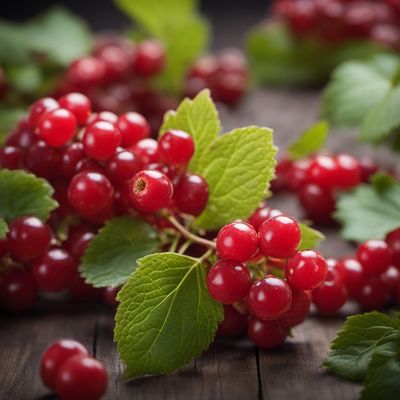
Ingredient
Phalsa fruits
The Exotic Jewel of Summer: Phalsa Fruits
Phalsa fruits are small, round berries that are approximately the size of a blueberry. They have a deep purple to black color when ripe and are covered in a thin, delicate skin. The flesh of the fruit is juicy and translucent, with a gelatinous texture that bursts with flavor when bitten into. Phalsa fruits have a sweet and tangy taste, reminiscent of a mix between blackberries and cranberries. Their refreshing flavor is often described as a combination of sweet and sour, making them a delightful treat during the hot summer months.
Origins and history
Phalsa fruits are native to South Asia, particularly India and Pakistan, where they have been cultivated for centuries. They have a rich historical and cultural significance, being mentioned in ancient texts and folklore. Phalsa fruits were highly valued for their medicinal properties and were used to treat various ailments. Over time, they spread to other parts of the world, including Southeast Asia and Africa, where they continue to be enjoyed today.
Nutritional information
Phalsa fruits are low in calories and rich in antioxidants, vitamins, and minerals. They are a good source of vitamin C, potassium, and fiber.
Allergens
There are no known allergens associated with phalsa fruits.
How to select
When selecting phalsa fruits, look for berries that are plump, firm, and have a deep purple to black color. Avoid fruits that are overly soft or have blemishes on the skin. The skin should be thin and intact, without any signs of wrinkling or drying.
Storage recommendations
Phalsa fruits are highly perishable and should be consumed within a few days of purchase. To extend their freshness, store them in the refrigerator in a breathable container or a perforated plastic bag. Avoid washing the fruits until ready to use.
How to produce
Phalsa fruits can be grown in tropical and subtropical regions. They thrive in well-drained soil and require full sun exposure. The plants can be propagated from seeds or cuttings and should be watered regularly. It takes approximately 2-3 years for the plants to start bearing fruits.
Preparation tips
To enjoy phalsa fruits, simply rinse them under cold water and remove any stems or leaves. They can be eaten fresh as a snack, added to fruit salads, or used to make refreshing beverages such as juices, smoothies, or sorbets. The fruits can also be used in desserts, jams, and sauces to add a unique tangy flavor.
Culinary uses
Phalsa fruits are commonly used in South Asian cuisine to make refreshing drinks, such as phalsa sherbet or phalsa lassi. They are also used in desserts, ice creams, and fruit salads to add a burst of tangy flavor. Additionally, the fruits can be used to make jams, jellies, and sauces.
Availability
Phalsa fruits are commonly available in India, Pakistan, and other South Asian countries. They are also cultivated in some parts of Southeast Asia and Africa.
More ingredients from this category » Browse all

Riberries
The Vibrant Delight

Saskatoons
The Sweet Berry of the Prairies

Hawberries
The Vibrant Delight: Exploring the World of Hawberries

Elderberries
The Power of Elderberries

Buffalo berries
The Tangy Delight of Buffalo Berries

Che berries
The Exotic Delight: Che Berries

Dwarf elderberries
The Tiny Powerhouse: Exploring the World of Dwarf Elderberries

Midland hawberries
The Hidden Gems of Midland: Exploring the Delights of Hawberries

Red elderberries
The Vibrant Gems of the Forest

Silverberries
The Shimmering Gems of the Culinary World

Guelder rose berries
Guelder Rose Berries: Nature's Vibrant Gems

Sorb fruits
The Sweet and Tangy Delights of Sorb Fruits